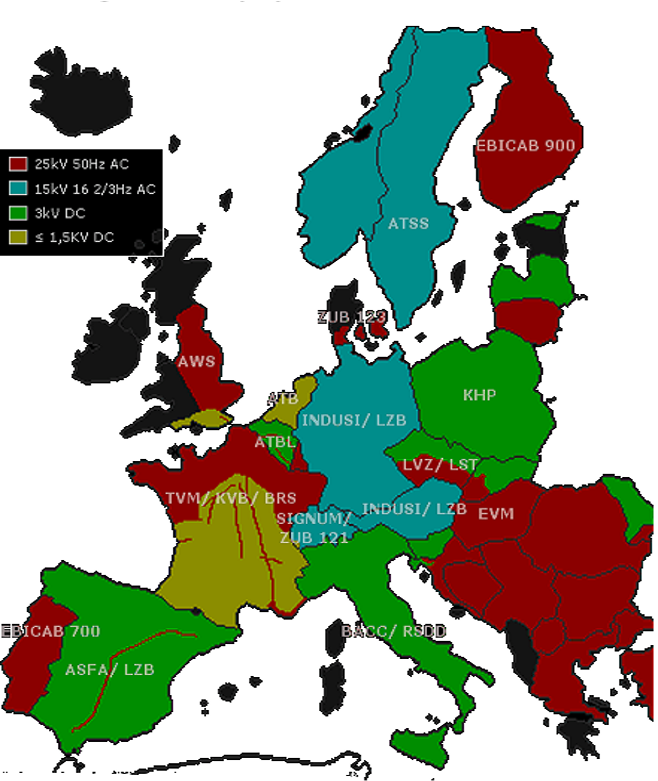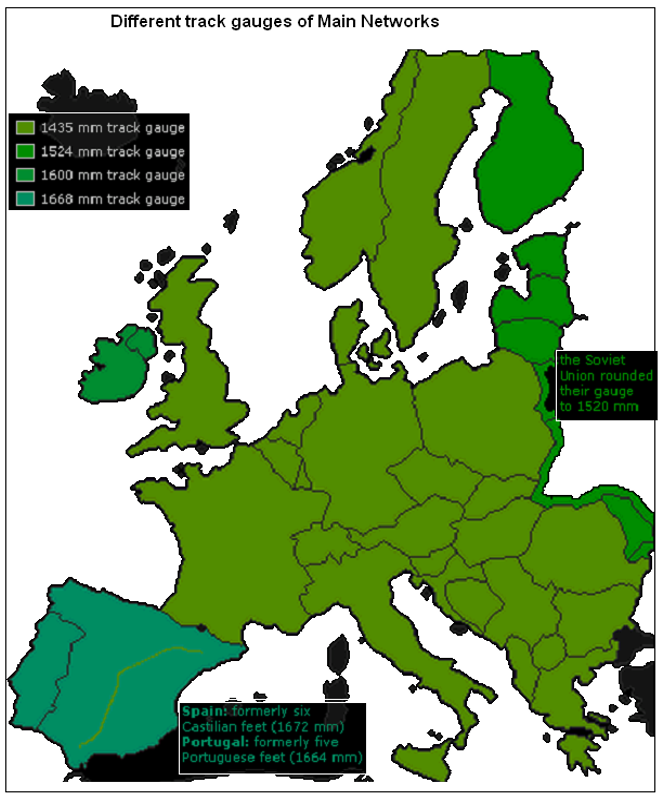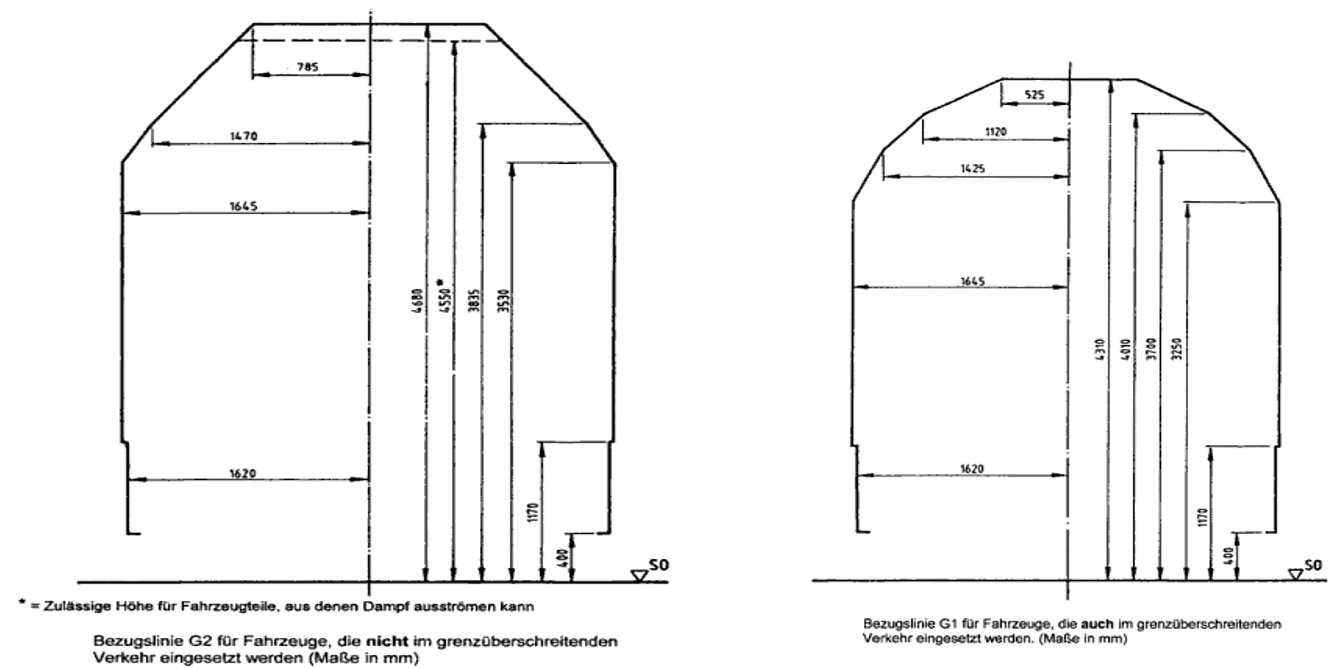Rail Transport System
In this section you will learn more about the rail transport system and its different elements goods, trains, railways and railway stations. This topic follows the structure of the conceptual system model of transport and traffic.
5. Railways
The next element of the conceptual system model is infrastructure. In the rail transport system, the infrastructure is called "Railways". Those railways are needed for the realization of rail traffic.
On this page we deal with topics such as the infrastructural structure, interoperability and technical characteristics of the railway track.

Rail Infrastructure
The global railway system is dominated by six main track gauges.
- The 1435 millimeters gauge accounts for about 60% of the total gauge kilometers and was introduced in North America and most of Western Europe, for example.
- The 1520 millimeters gauge accounts for about 17% of the total gauge mileage and has been introduced in Russia and some parts of Eastern Europe (Baltic States, Belarus, Ukraine).
- The Iberian broad gauge of 1668 millimeters is unique in Western Europe and was created by averaging the Spanish (1672 millimeters) and Portuguese (1665 millimeters) broad gauge.
Rail networks in Europe
Rail connections are not limited by national borders, so the different railway systems need to ensure a safe and seamless movement of trains.
This so called interoperability is the ability (of the trans-European rail system) to facilitate safe and seamless movement of trains. The interoperability is hampered by differences, not only in the European rail infrastructure, for example:
- power systems (voltage and safety systems, pantographs width),
- track gauges,
- clearance profiles and loading gauges profiles.
In Europe, interoperability is regulated in the Trans-European railway interoperability regulation and technical specifications (TSIs)
As you read before, the power systems are hampering the interoperability. In order to ensure a barrier-free transition between the rail networks, there are different ways to cope with the different power systems, which will be presented to you in the following.
Power system
Multi-system trains can be operated in different voltage and pantograph systems and/or using additional diesel engines:
- Since 1960, two-and multi-system locomotives are used in transnational rail traffic, eliminating the time-consuming need to change locomotives.
- Multi-system trains are used in particular in the high-speed rail system (e.g. Thalys operated between Cologne and Paris (1997)).
- Currently, the ICE 3 MS/Neo (407 and 408 series) operates between Germany, France, Belgium and the Netherlands.
- Since June 2007, the TGV POS runs between Paris, Eastern France and Southern Germany.
The figure "Voltage and safety systems" shows the different voltage and safety systems that are existing in different countries. The different systems are either using direct current with 1.5 kV or 3 kV or alternate current with 15 kV – 16.7 Hz or 25 kV – 50 Hz.
In the figure "Pantograph width", you can see the different pantograph widths of the railway network in Europe, which is varying from 1450 mm, over 1800 mm and 1900 mm up to 2050 mm.
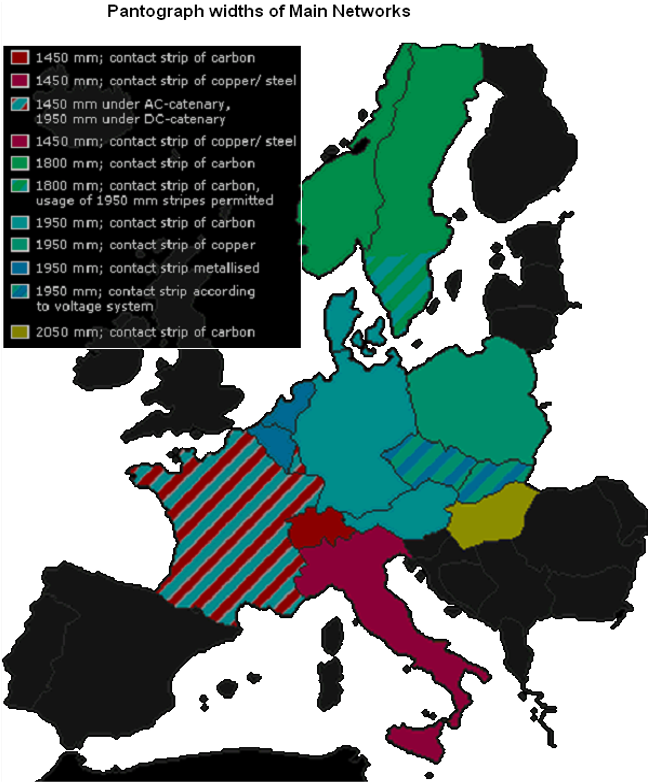
In addition, a barrier-free rail network requires common technical standards such as track gauge and direction of travel, which are presented below.
Driving direction
The figure "Driving directions" shows the different driving directions of the trains in Europe. In some countries, trains run on either the right or the left track, while in some countries, trains run on both the right and left track.

If the track gauges are not the same size, there are several opportunities to overcome this obstacle:
The simplest version is the transfer of passengers and transshipment of goods, for example with containers.
Another option is the exchange of axles / bogies. This change of wheel sets is common in freight traffic to the Iberian Peninsula, as well as to Finland, while in Russia the entire bogie is changed.
The figure "Track gauges" gives you an overview of the different track widths/gauges in Europe. In most of Europe, the standard gauge has a width of 1435 mm. Only in some eastern countries like Russia and Finland the gauge width is 1524 mm, while in Spain and Portugal the width is 1668 mm.
The next two sections deal with the clearance gauge. This describes a defined vehicle boundary line that guarantees the unrestricted passage of transport vehicles and their loads.
Structure gauge
The following figure shows two structure gauges. The structure gauge is the minimum clearance outline of the wagon. The structure gauge determines the minimum height and width of tunnels and bridges required for a safe use of the railways.
While the right structure gauge (G1 profile) can be used throughout Europe, the large volume wagons on the left (G2 profile) are too big for some countries and therefore can’t be used in UK, France, Italy, Belgium and Switzerland.
Loading gauge profile
Defines the maximum height and width for railway vehicles and loads and ensures the safe passage through bridges, tunnels and other structures. The figure shows the different loading gauges for the UK, France, Germany and the Eurotunnel. In the UK, the headroom above rail level is only 3.96 m, while the Eurotunnel has a headroom above rail level of 5.60 m.
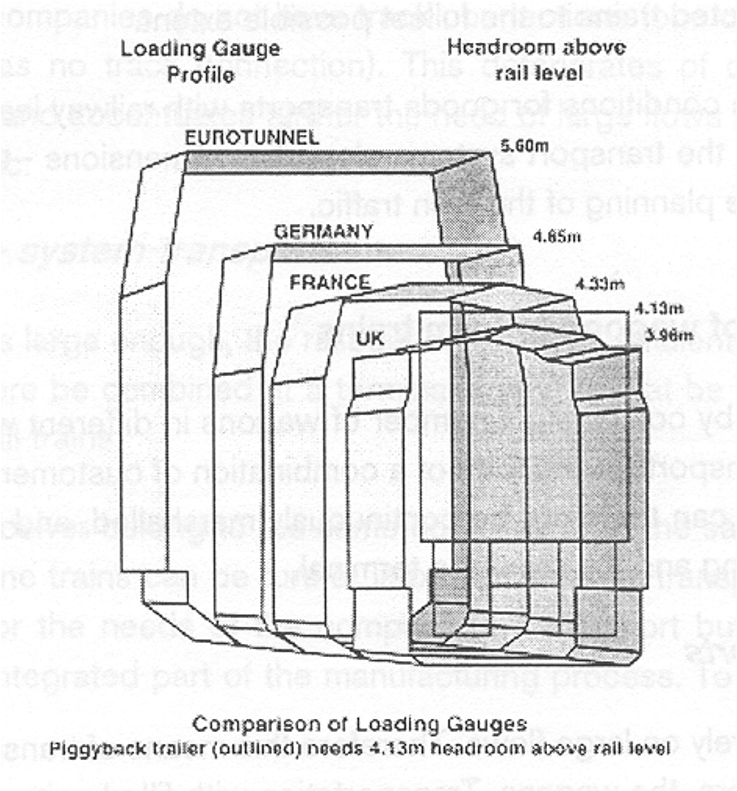
One example for a transcontinental line is the Trans-Asian railway. The interest for a long-distance rail connection between Asia and Europe was renewed in the 21st century. These connections have become known as the Trans Asian Railway, the Northern East-West Corridor, the Eurasian Land bridge, the New Silk Road or the BRI (Belt and Road Initiative). Among the numerous challenges the corridor is facing the rail system operates on two gauges, standard (1435 mm; China and most of Western Europe) and broad (1520 mm; Russia and some Scandinavian countries)
